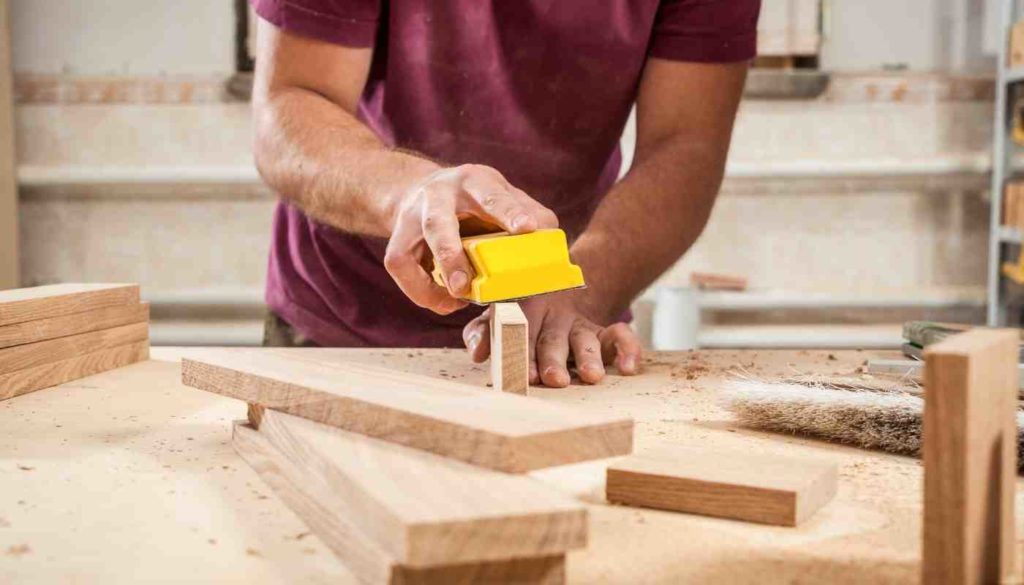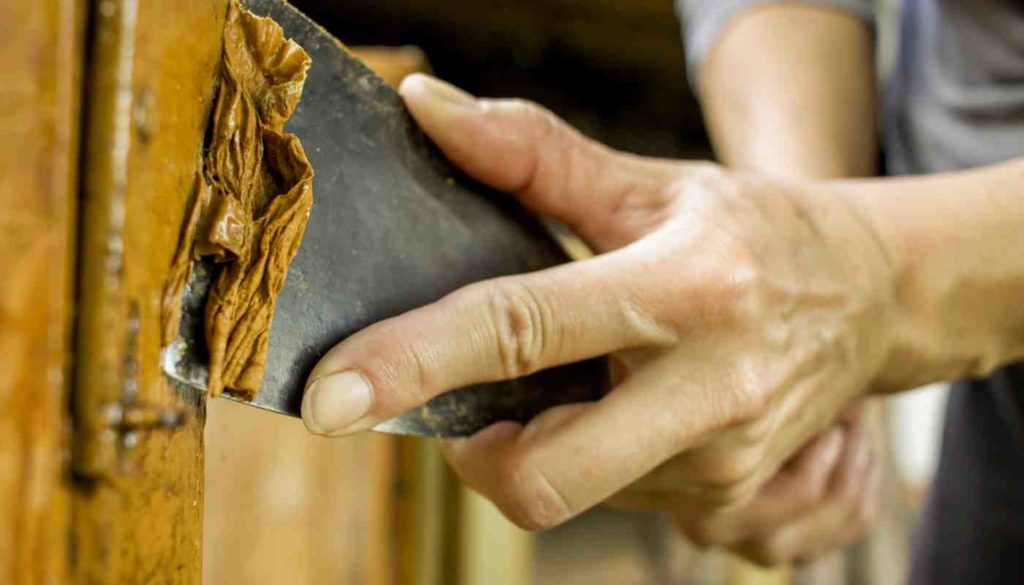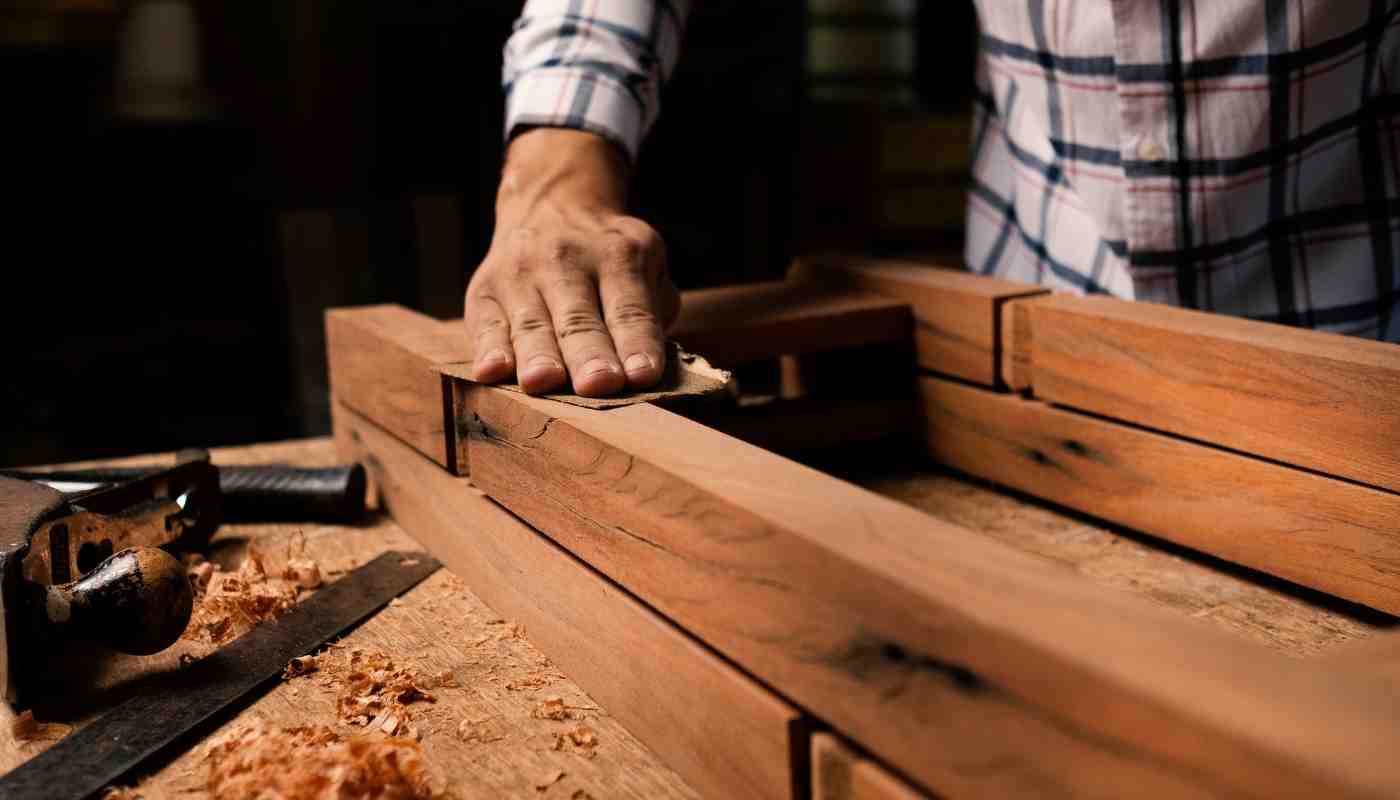What Grit Sandpaper For Painted Wood? (2024 Guide)
Sandpaper can often be the difference between a beautiful piece of woodworking, and one that looks unfinished or unprofessional.
Choosing the right grit sandpaper for your project is critical to proper sanding and getting the right finish on your wood surface.
But, when you’re also working with paint, it can be more difficult to know what grit sandpaper you need. Sanding paint, or sanding unfinished wood to prepare for painting a wood surface need two different grits.
In this post, I’ll explore what grit sandpaper for painted wood is needed, when you need to use each one, and how to match sandpaper grit to your project. Let’s get started!
Choosing The Right Grit Sandpaper For Your Wood Surface
The first thing you need to do is figure out what kind of sanding you’re doing.
Are you choosing a sandpaper to prepare your project for painting, are you starting a paint removal project, or are you looking to weather paint to make it look aged and antique?
All of those kinds of paint projects need a different grit of sandpaper.
For instance, you might want to use a fine grit sandpaper if you’re weathering a painted surface since you don’t want to strip all the paint.
But you might need to move from a coarse sandpaper to a medium grit sandpaper to a fine sandpaper grits if you’re looking to completely remove paint and refinish the surface smooth.
So before you get any sandpaper at all you need to think about your piece, how you want to finish it, and any flaws in the wood that might change how you need to treat it.

Different Roles For Different Grit Sandpaper
Before you can decide whether you need coarse sandpaper or finer grits, you need to know how each sandpaper works. There are a lot of options to choose from, but they fall into three basic categories.
Coarse Sandpaper
Coarse sandpaper is usually the first sandpaper you use when you’re finishing a surface.
It’s larger grit particles are designed to help remove larger amounts of material and is good for rough sanding a surface.
From bare wood, coarse grit sandpaper can help remove deep scratches, old varnish, sticky residues, or other imperfections. It’s meant to give you a smooth finish for additional sanding and paint preparation.
Coarse sandpaper is good if you want to remove paint to prepare for new paint or to get rid of a coat of paint to reveal what’s underneath.
You may also use coarser sandpaper to sand metal, especially if you want a slightly rougher surface for part of your project.
You can also use heavy grit sandpaper in a belt sander for shaping and removing excess material from a project.
Check out these differences between a belt sander and orbital sander to know which one you should use!
Medium Grit Sandpaper
Sandpaper grit sizes vary widely, and while some people only think about coarse and fine sandpaper, the middle grits or medium grit sandpaper is important as well.
Medium grit sandpaper is great for light sanding where you don’t want a perfectly smooth wooden surface, but you don’t want the roughness of natural wood. It’s commonly used in a belt sander for light shaping and early finishing work.
Middle grit sandpaper, like 60 grit sandpaper, is also good for surface preparation. It smooths the surface enough to provide a nice finish, while also providing enough texture so that paint has something to grip.
Overly smooth surfaces often need more coats of paint to get a good finish. But the final finish coat of any paint will help create a smooth surface, hiding any imperfections left behind by the medium grit sandpaper.
Fine Grit Sandpaper
If you’re looking to get a flawless gleam from hard surfaces, you need to choose the right sandpaper for the job. An 80 grit sandpaper is good for rough work, but you’ll need finer grits to get a surface smooth and gleaming.
The finer the sandpaper the less material it will remove, and the clearer smooth finish you’ll get. The higher grit number, the finer the sandpaper will be. These kinds of sandpaper are best for lightly sanding and creating a very smooth surface.
Anything 150 grit or higher is considered a fine grit. Lower grit is better for prepping a surface and helping to smooth or remove imperfections, but high grit sandpaper if perfect for smoothing a varnished tabletop or otherwise creating a fantastic surface that creates a lot of reflected light.
Moving up to 220 grit or higher it can feel like an endless job to create a perfect smooth surface. But, you can use a sanding block, mouse, or similar tools to help making the work easier and faster.

How To Remove Paint From Wood
Removing old paint from wood is often one of the first steps to restoring old furniture and even architectural elements.
Depending on how the paint was applied there might be a lot of steps to this process, or only a few.
For instance, if the paint is starting to bunch up and slide off the wood you’re working with, chances are there is an oil-based finish under the paint that wasn’t properly removed before the surface was painted.
In that case you’ll want to scrape the wood to remove as much of the paint as possible before you start sanding to remove the remaining paint and underlying finish.
But if your surface was just painted you may want to skip scraping and go in directly with some coarse sandpaper to remove a small section of paint and see what the wood looks like underneath.
That way you can judge the quality of the wood, see how it was treated before painting, and make a game plan of how to restore it.
Remember, you don’t want to use coarse sandpaper longer than you have to because it removes a lot more material. For most restoration jobs you won’t want to change the underlying shape of the material.
Stick to removing the paint and getting to a clean surface. After that, you’ll want to move to a medium grit sandpaper to start smoothing and restoring the surface.
Finally, decide whether you want to repaint the surface, or if you’d rather restore the wood and give it a stain or polish to bring out the grain.
If you want to repaint, you should get the surface relatively smooth with medium grit or a relatively large fine-grit sandpaper. Remove all the sawdust before painting.
If you want a refined all-wooden finish or are planning to varnish the wood, you should continue onto fine-grit sandpaper before finishing your project.
You can also check out some of my favorite sanders for removing paint.
Preparing Wood For Painting
Remember that paint should be considered the final step in any project.
If you’re still smoothing imperfections, need to add hardware, or want to add additional pieces before the final coat of paint, you should complete those steps before painting.
The only exceptions to this are hinges, which may need to be added after painting is complete, and decorative hardware that isn’t going to be painted, or will be painted a different color, on the finished project.
Next, evaluate what kind of paint or finish you’re going to use.
For most latex-based paints, the most common kind for interior decoration and a lot of furniture as well, (don’t worry, latex based paints don’t contain any natural latex, so you don’t need to worry about using them even if you have a latex allergy) you don’t want a perfectly smooth surface when you start.
However, for some varnishes and stains, the opposite is true. The smoother the surface when you start applying the finish, the easier it will be to keep the final surface smooth.
That’s important because no matter what kind of finish you’re using, you don’t want to use more coats of finish than you need to.
Every extra coat is another chance for imperfections and problems to bubble to the surface, forcing you to strip off the paint and start over.
And with some kinds of finish, like stains, you might not be able to remove the finish without sanding your finished piece down.
Once you know what kind of surface texture you need for your chosen finish, you can start painting. You may want to paint a small section of your project before continuing with the rest, partially to test the final texture as well as seeing what color the paint dries to when it’s done.
If, at that point, you realize you need a slightly smoother or rougher surface, you can sand some more with the right grit of sandpaper for the job.
Check out this post if you’re wondering if you can sand MDF!
Tips For Using Sandpaper On Painted Wood
Here are some quick tips to help keep you safe and make sanding more effective.
Wear A Respirator
It’s a good idea to wear a respirator and other woodworking safety gear anytime you’re sanding to help prevent sandpaper and dust from getting into your airways.
But when it comes to painted wood you need to upgrade to a respirator. The chemicals in paint dust can be very harmful, and you don’t want to risk breathing any of that dust in while you work.
Work Outside Or With Good Ventilation
Much like you should wear a respirator to protect from paint dust and particles, you should also make sure you’re sanding somewhere with high-quality ventilation to keep the dust from building up in your work area.
Sand With The Grain Once You Can See It
One of the best ways to get good results, and to create a smoother surface when you’re done, is to sand with the grain of the wood while you’re working.
That means that once enough paint is removed that you can see the grain of the wood underneath, you should switch to sanding with the grain.
Sanding with the grain can also help prevent the wood from cracking and splintering, which is especially important for antique work and older pieces where it’s more likely for the wood to be dehydrated and fragile.
Final Thoughts on Picking the Right Sandpaper Grit for Painted Wood
Sandpaper comes in many different grits that make it versatile for any job.
But what grit sandpaper should you use for painted wood?
When prepping unfinished wood for painting with a smooth finish, it’s best to use a fine grit sandpaper that is anywhere from 150 grit to 220 grit.
If you want a rougher finish, using coarser grits (around 120 grit) can be a better option.

